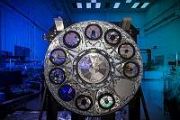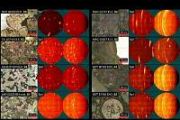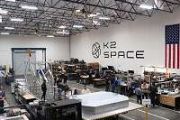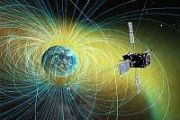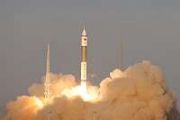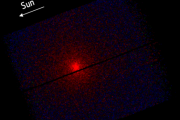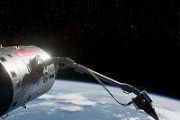
Copernical Team
X-ray mission lifts off to study high-energy Universe
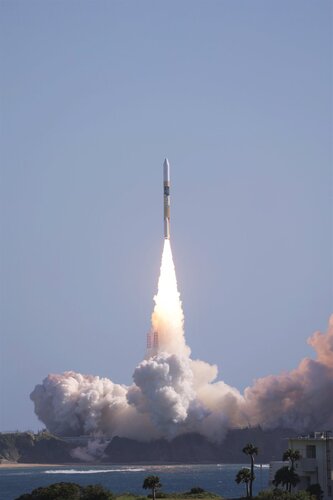 Image:
X-ray mission lifts off to study high-energy Universe
Image:
X-ray mission lifts off to study high-energy Universe NASA's PACE spacecraft successfully completes key environmental test
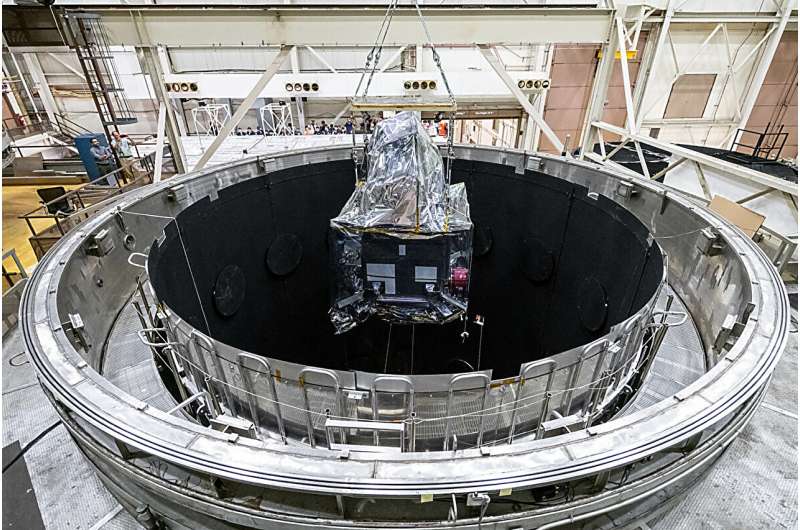
Consider it the "mother of all tests."
This summer, the PACE spacecraft (short for Plankton, Aerosol, Cloud, ocean Ecosystem) completed a critical phase of its launch journey: the thermal vacuum test (TVAC), where it was subjected to extreme temperatures and pressures in a specialized chamber at NASA's Goddard Space Flight Center in Greenbelt, Maryland.
The objective? To verify the performance of the satellite once it's launched and operational.
"This is the best way to simulate what PACE will experience in space," said Craig Stevens, spacecraft systems lead.
Newly discovered comet visible in night sky this weekend
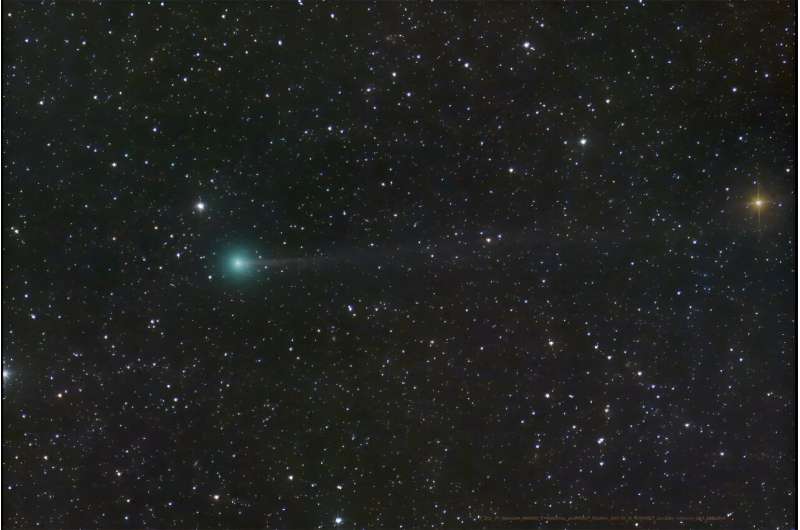
A comet called Nishimura discovered just a month ago could be visible to the naked eye this weekend, offering stargazers a once-in-a-437-year chance to observe the celestial visitor.
The ball of rock and ice, whose exact size remains unknown, is named after the Japanese amateur astronomer Hideo Nishimura who first spotted it on August 11.
It is rare that comets reach their moment of peak visibility so soon after being discovered, said Nicolas Biver, an astrophysicist at the Paris Observatory.
"Most are discovered months, even years before they pass closest to the sun," he told AFP.
The comet only swings by the sun every 437 years, he said, a long orbital period which sees it spend much of its time in the freezing outer solar system.
Scientists study mode switching control for drag-free satellite based on region of attraction
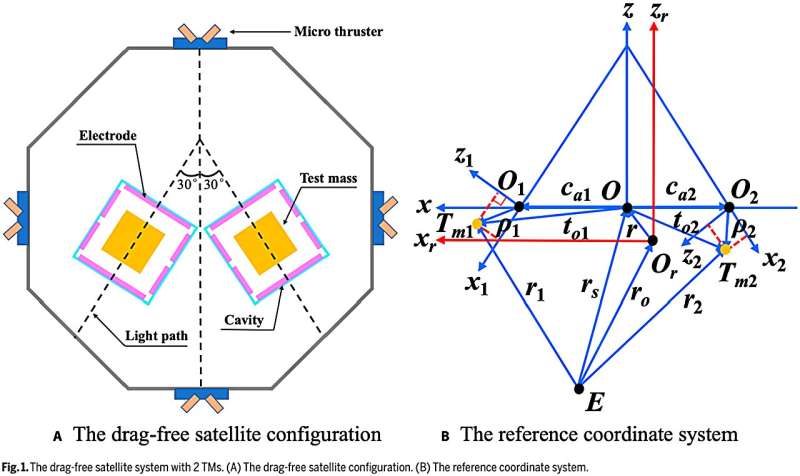
In recent decades, drag-free satellites have been used in high-precision missions, such as testing the general relativity, verifying the geodetic and frame-dragging effects, measuring Earth's gravity field, etc. In space gravitational wave detection, drag-free satellites play an important role.
Previous research on the drag-free satellite has focused on the drag-free control algorithm. Nevertheless, science mode and nonscience mode have different control forces, sensor measurement range, measurement noise, and reaction force noise. Therefore, the different controllers for the capture control mode and the high-accuracy control mode of the test mass (TM) need to be designed.
However, it is easy to cause system instability or even uncontrollability when switching between different controllers. Research on the switching control between different modes is very important. In the drag-free satellite, there is little research on the switching control between different modes. Multi-degree of freedom strong coupling and controller saturation remains an urgent problem to be solved.
Final images before Aeolus's demise
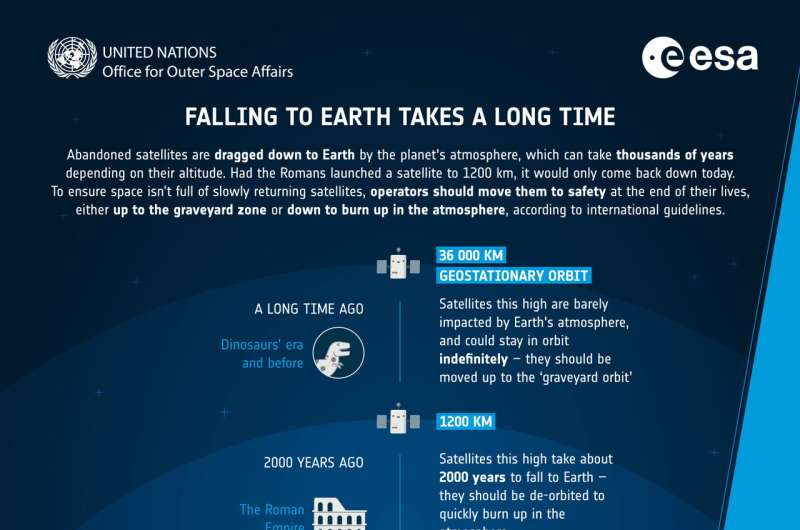
International regulations on space debris mitigation set a limit on how long a satellite should linger in orbit once its mission is complete—it mustn't be longer than 25 years.
For missions flying at low altitudes, their return is made faster as they are grasped by Earth's wispy atmosphere and are quickly brought home.
During Aeolus's first-of-its-kind assisted reentry in July, not only was the (already low) risk from falling debris reduced by a factor of 150, but the time during which Aeolus was left uncontrolled in orbit was shortened by a few weeks, limiting the risk of collision with other satellites in this vital space highway.
Moving moments
NASA's Psyche mission on track for liftoff next month
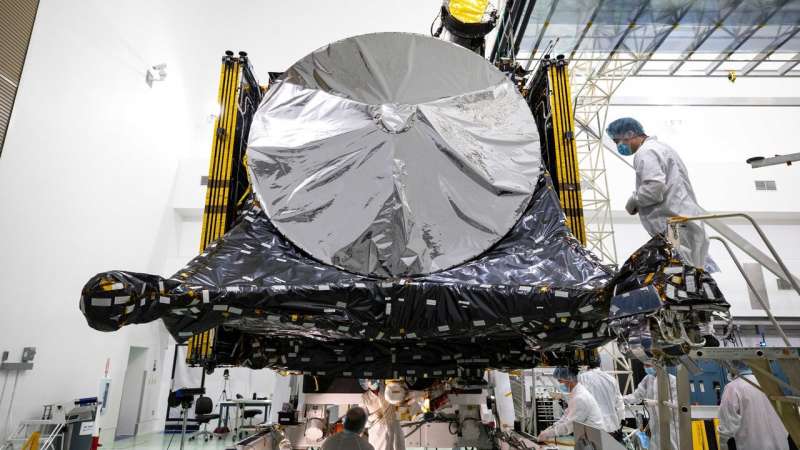
Bound for a metal-rich asteroid of the same name, the Psyche mission is targeting Oct. 5 to launch from NASA's Kennedy Space Center in Florida.
The spacecraft's solar arrays are folded like an envelope into their stowed position. Xenon gas—fuel for the journey to the asteroid belt—is loaded.
NASA's oxygen-generating experiment MOXIE completes Mars mission
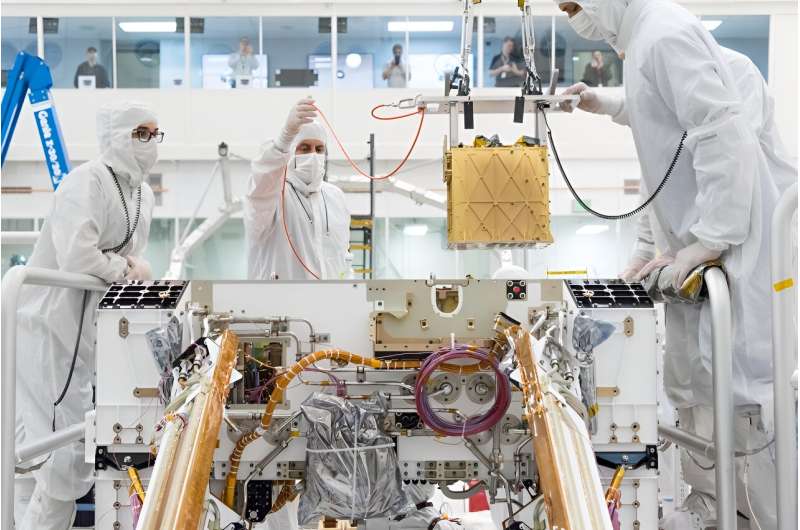
When the first astronauts land on Mars, they may have the descendants of a microwave-oven-size device to thank for the air they breathe and the rocket propellant that gets them home. That device, called MOXIE (Mars Oxygen In-Situ Resource Utilization Experiment), has generated oxygen for the 16th and final time aboard NASA's Perseverance rover.
Examining the effect of different geometric porosities on aerodynamic characteristics of supersonic parachutes

The safe landing of the probe is one of the most difficult challenges in Mars exploration, and the Mars supersonic parachute is extremely important for this process. To date, all the successful Mars exploration missions have used disk-gap-band (DGB) parachutes. However, the DGB parachute with the highest diameter of 21.35 m cannot be further used for future Mars exploration missions with higher loads.
Next-generation supersonic parachutes conducted by NASA, such as disksail parachutes, are alternatives to DGB parachutes. Disksail parachutes have larger porous gaps and smaller porous seams on the canopy surface than DGB parachutes. However, there are few studies on the aerodynamic characteristics of supersonic parachutes with different geometric porosity structures and locations.
Hence, the influence mechanism of porous seams or gaps and their locations on the performance of supersonic parachute systems in Martian atmospheric conditions remains unclear.
Have we really found the first samples from beyond the solar system? The evidence is not convincing

Avi Loeb, an astrophysicist at Harvard University in the US, has published a press release claiming that some of the 700 or so spherical metallic fragments (spherules) he recovered from the bottom of the Pacific Ocean, just off the coast of Papua New Guinea, are from beyond the solar system.
The discovery was quite interesting because, although such spherules are distributed globally, it is not easy to recover them from the depths of the ocean bed—requiring a dredging operation with a powerful magnet. But Loeb has speculated that the spherules may be related to the passage of an interstellar meteor, IM1, which burned up over the South Pacific Ocean in January, 2014. He has even hypothesized that the spherules are actually debris from an alien spacecraft. I commented at the time that I'd need firm analytical evidence to accept such interpretations.
Loeb has now provided a very detailed set of analytical data of 57 spherules in an article submitted to a journal.
Camera ‘hack’ lets Solar Orbiter peer deeper into Sun’s atmosphere
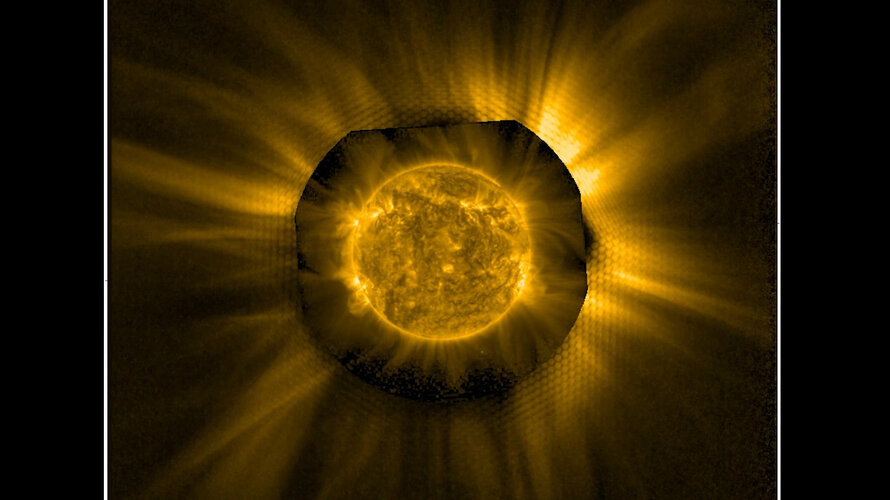
Scientists have used Solar Orbiter’s EUI camera in a new mode of operation to record part of the Sun’s atmosphere at extreme ultraviolet wavelengths that has been almost impossible to image until now. This new mode of operation was made possible with a last-minute ‘hack’ to the camera and will almost certainly influence new solar instruments for future missions.













